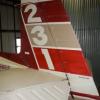Strategy for crossing a front
-
Members Online
- Mobius708
- 47U
- CCowboy
- Flyler
- Fix
- red2000gt
- tailgator
- Marc_B
- Scott H
- dkkim73
- dzeleski
- Aaviationist
- 65MooneyPilot
- mluvara
- Vulcan81
- jlunseth
- neilpilot
- TCC
- hypertech
- Slick Nick
- NickG
- Yetti
- Vance Harral
- PT20J
- philiplane
- Falcon Man
- EricJ
- M20F
- acekng1
- Av8rjm
- redbaron1982
- Mreed420
- BrentS
- MB65E
- Wagee
- MatthiasArnold
- Minisky
- ericsmsgs
- 201Steve
- Skyland
- varlajo
- Justin Schmidt
- lithium366
- buddy


Recommended Posts
Join the conversation
You can post now and register later. If you have an account, sign in now to post with your account.